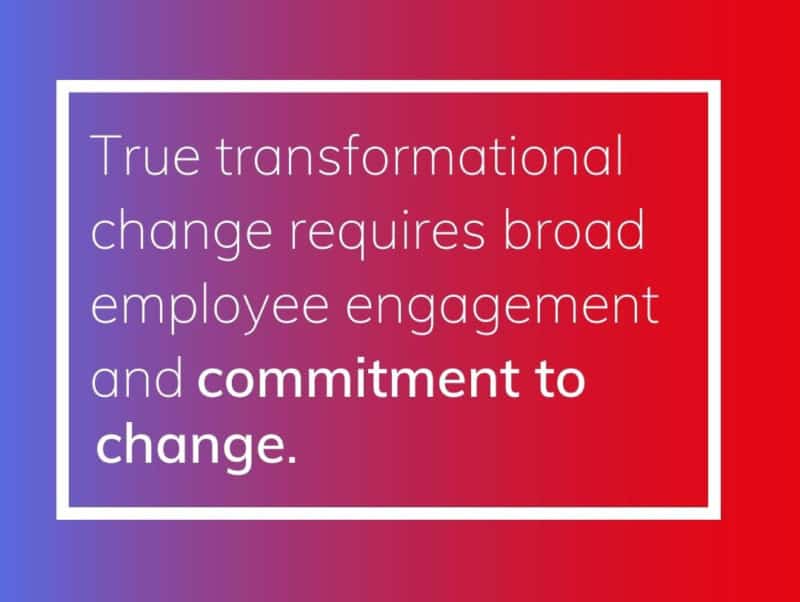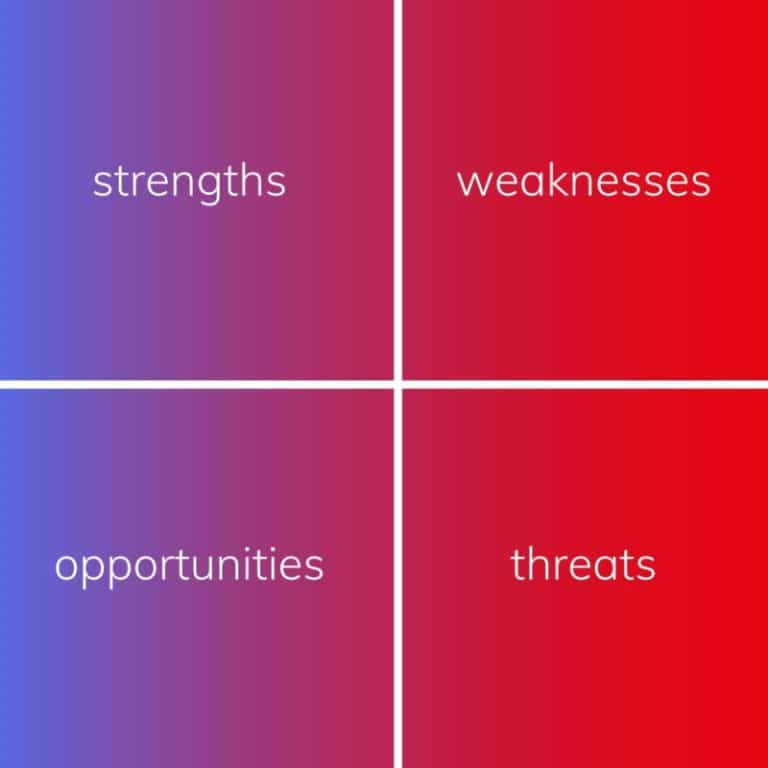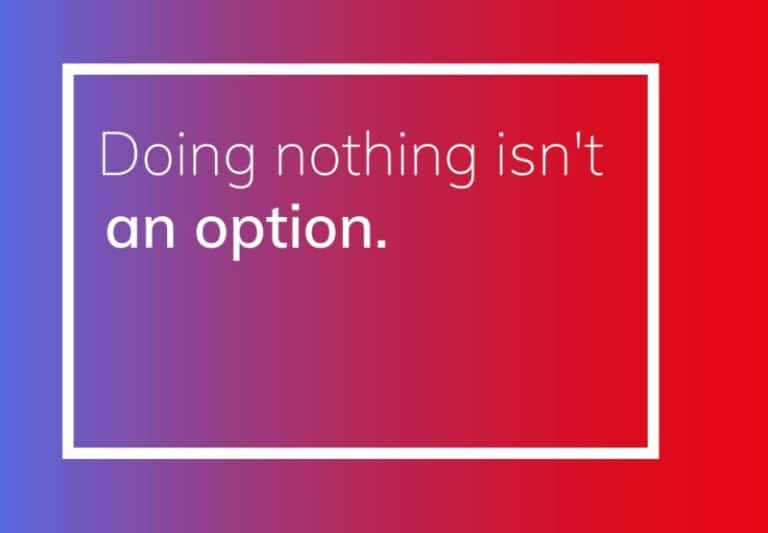A guide for tech leaders. Innovating through a downturn

What is the right strategy to follow during a significant downturn? How can tech leaders prepare and respond? It’s all about strategic readiness through a combination of awareness, flexibility, strong navigational leadership, planning, resilience, considered investment, agility and most importantly, innovation. We created this guide about innovating through a downturn to support you. It outlines the choices and considerations tech leaders should consider to enable successful innovation to happen. If you’re reading this guide, then perhaps you’re feeling the pinch and experiencing some of the effects of the current economic downturn and recognise the risk it brings to your business. Now is the time to act.
1. Introduction – Innovating through a downturn
Many factors influence business survival and growth, but innovation plays a critical role. It gives you a competitive advantage and in today’s climate, it is going to be essential to deliver urgent changes in response to external market drivers:
- Understanding where you need to be – why and where to innovate.
- Choosing the best way to get there – how to innovate.
Two realities prevalent today, are unique compared to other periods of downturn that we’ve experienced in the past:
- As a result of Covid19, a lot of industries are going to need to fundamentally alter their proposition, or delivery of it, to reflect a near term socially distanced reality. In addition, some consumer behaviours are going through a step change rather than incremental change. For example, the move away from cash to e-payments. These new demands coincide with fundamental changes in how we need to operate internally meaning organisations are innovating ways of working simultaneously with product propositions.
- A lot of innovation is now “product-led” within a digital framework. Although this is not the only way to innovate, it is key to aligning technology capability with external market drivers. Agile Methodologies are now widely adopted, allowing for a fail faster approach to product innovation, which is a significant change to the last downturn which began in 2008, when most people followed a waterfall approach.
2. Understand your innovation options

A move towards digital platforms and solutions is proving a huge challenge for CIOs. While organisations recognise an effective digital strategy is critical to successful data security, many report they still struggle – with 78 percent stating that their digital strategy is only moderately effective, or worse. More than a third of companies (35 percent) can’t hire and develop the people they need with digital skills. And almost one in ten (9 percent) think that there is no clear digital vision or strategy at all.
“I keep six honest serving-men (They taught me all I knew). Their names are What and Why and When and How and Where and Who.”
I Keep Six Honest Serving Men – Rudyard Kipling
IT departments are driven by organised, analytical thinking, yet innovation remains a challenge. There is perhaps a simple explanation. It’s difficult to plan the best route if you’re not sure of your destination. So let’s first consider the four types of innovation and the broad benefits they deliver.
2.1. Technical innovation
Technical innovation improves direct outcomes from the use of Technology, maximising platform productivity, capacity, and capability. As Technology has become mission-critical, we can also add risk factors such as operational security and resilience to these measures.
These improvements are the most obvious and easiest way for IT departments to innovate. The gains achieved tend to be low to medium value delivering minimal competitive business advantage.
Many businesses have made the leap to public or private cloud platforms encompassing on-demand services to achieve these gains. Many others have outsourced capability with tightly defined contracts that maximise cost efficiency. Thus there is widespread variation in terms of flexibility in current arrangements across businesses in terms of flexibility to change.
The strategic trick is to identify technology trends early and make the right choices, however, this can leave us exposed if the corporate driver switches rapidly from say efficiency to resilience or flexibility. This for many will be the case now.
2.2. Strategic innovation
Strategic in this context implies an outward-looking focus, transforming what you deliver to your customers, your positioning within the market, and even disrupting the market. It can deliver the greatest corporate advantage and works best when focused on one or two really big ideas. Implementation demands strong collaboration between business units and IT, to achieve success.
The launch of online services like the Netflix, Amazon, eBay and price comparison websites all broke the mould of how their markets operated. When the government announced the simple idea of “Joined-up government” they started a seismic shift from a civil service-centric approach to a citizen-centric approach.
The obvious targets for strategic innovation are therefore all customer/market-facing and can be realised through products, services, price and delivery.
The best opportunities will not be driven by the tempo or pace of their target market, they will set that tempo.
2.3. Operational innovation
Operational innovation is primarily inward-looking and focuses on improving the 3Es i.e. efficiency, effectiveness and economy.
- Efficiency is concerned with how well we handle the volume of work.
- Effectiveness addresses how accurately we complete it.
- Economy examines the related costs in service delivery.
Bearing down on these 3Es can generate tremendously improved performance.
Typically, this involves changes to process flows, individual roles, processing times and control mechanisms to focus on value add components and outsource commodity. For example, Nike outsources all manufacturing and administrative services, enabling focus on design, relaxed in the knowledge they can always find the cheapest and fastest quality producers, and that peaks and troughs in demand are no longer a problem.
Maximising success also means adopting a more holistic view of business processes, IT applications, organisation structures and individual/team roles and responsibilities.
This has been clearly seen within Technology departments, where the move to product-led development within digital teams has enabled faster cycle times and continuous feature development in conjunction with marketing and operational functions.
This has, in particular, enabled greater incremental innovation of on-line interactions but in many instances has not addressed weaknesses in back end operational processes.
2.4. Cultural innovation
Last, but most importantly for innovation, the cultural angle engages people and changes attitudes. True transformational change requires broad employee engagement and commitment to change, in order to enthuse and energise the “way we do things around here”. When successful, the leverage gained can be disproportionate to the effort involved.

Unfortunately, many cultural change programmes fail because they do not truly engage hearts and minds, either due to a lack of communication, a lack of leadership, or defensive behaviours due to perceived threat to employees, e.g. potential for redundancies.
True innovation requires fresh approaches to challenging ingrained practices, and openness to adopt new ways of working, providing open communication and addressing employee concerns.
Cultural change is particularly important when moving to digital ways of working and the idea of an agile organisation, where the organisation flexes its processes frequently to test, learn and innovate services.
In the current climate, most organisations are experiencing enforced cultural change due to increased levels of remote working.
It’s important to ensure that this is being well managed and that productivity, employee well-being and engagement measures are being implemented.
3. Process considerations
This guide adopts Lao Tzu’s advice and provides food for thought under three main areas: Plan, prepare and perform.

“Give a man a fish and you feed him for a day. Teach a man to fish and you feed him for a lifetime.”
Lao Tzu
3.1. Plan phase
Before you can embark on your journey you must establish where you are starting from.

3.1.1. Attitude to risk
All change involves risk so opportunities must take into account your organisation’s attitude to risk-taking and risk-reward management. The changes required today to enable business survival may require different risk/reward approaches to BAU and need to be consciously assessed.
3.1.2. SWOT
Understanding current strengths and weaknesses, opportunities and threats is a simple and useful technique. In this context, the SWOT analysis should be from four viewpoints, internal (Technology and Operational), customers, competitors and market. Innovation is not just about free choice; the SWOT results will highlight key areas which you need to consider.

3.1.3. Business justification
Most IT departments are well versed in objective financial justifications using techniques like Cost-Benefit Analysis and Return on Investment (ROI), where costs and benefits can all be measured in purely financial terms. Many strategic innovative opportunities will not be so straightforward, and it may be difficult, even impossible to ascribe accurate financial values.
These evaluations require more subjective and uncertain approaches like Investment Appraisal with which IT staff may be less familiar. You need to be very sure how you will control progress and stakeholders judge success for these projects.
3.1.4. Ability to influence
Technical innovation may be the preserve of the CIO and so easy to plan and control, but more systemic changes such as the implementation of cloud or digital development models have far-reaching consequences that benefit from broader board-level buy-in, particularly those that include cultural change such as product management.
It is therefore better to engage upfront, acting as an evangelist for this structural change.
3.2. Preparation phase
There are two aspects to preparation, Creativity – finding the big ideas, and Prioritising – making the right choices.

3.2.1. Creativity
Creativity is a soft skill, and so often at odds with normal IT skills, thinking and approaches. It requires imagination, ingenuity, inventiveness and improvisation. It calls for highly original, tangential, ‘off the wall’ thinking, yet, despite superficial similarities, it is much more than simple brainstorming.
At a strategic level, only one or two really big ideas are needed but they must be carefully sifted from a much wider pool of ideas. This calls for unfettered yet directed divergent thinking, including a broad range of organisational participants, often facilitated by product managers or external facilitators.
This must be followed by orderly convergent thinking to narrow choices and outline opportunities. Participants need to be chosen carefully and fully prepared for the activity. It needs time and space and should not be crammed into a busy daily schedule. Some inclusion of senior stakeholders in this process will aid future engagement and ownership.
3.2.2. Prioritisation
True innovation will require broader prioritisation than just the CIO, so the inclusion of a broad range of stakeholders, and their departments should be encouraged. The choices generated by creative thinking must be thoroughly evaluated and a formal prioritisation process applied to choose the most advantageous options.
Evidence-based objective selection is preferable so options should be compared or plotted on a number of matrices such as. :
- Assessment Maps – comparing, for example, benefits versus the difficulty of change should be used to filter candidates. Arrangements assessed as high value (we must change it) and easy implementation (guaranteed innovation) being ideal candidates.
- A Technology Targeting Map – could compare the suitability of current infrastructure, methods/techniques, applications etc., and their ability to leverage change.
- Ensure people-centric considerations are included in assessments – such as people changes, union engagement, cultural change.
A well-established prioritisation process with strong stakeholder engagement is essential to innovation success. The level of stakeholder engagement required increases dramatically for strategic innovation and needs to be managed upfront.
3. Perform phase
The Perform Phase is where chosen ideas are put into practice and their success reviewed. An approach that spans both Technology and Business Change projects is most effective at prioritising and driving consistent success. A common model is a portfolio governance process with project/product management frameworks beneath it to manage delivery.

3.3.1. Implement
At the top level, this is normal, by the book, portfolio planning and control activity requiring programme managers and a project management office.
Beneath this, there is usually a mix of project or product management teams dependent on the nature of the change and structure of the department. It is important to structure controls to reflect the scale of change, e.g. simple product backlogs for incremental change versus programme controls for large structural change.
Particularly in the current pandemic context, the time to market and business tempo demands may mean streamlining processes and controls which will need to be managed to avoid undue additional stresses. Successful innovation projects usually work to the Pareto 80-20 Rule, with speed being a primary driver.
3.3.2. Review
As with any delivered project there then comes a time to review how well expectations were achieved. Lessons should be learned, and appropriate problems fixed. Many agile teams build this into their sprint review process and adoption of this culture is healthy to overall programme success.
4. Top tips for innovating through a downturn

“Oh, give me something to remember you by”
Howard Dietz
4.1 Focus on talent management
This is a bad time to lose your most talented people. Review aspirations and incentives. Target short term goals, not longer-term objectives.
It’s worth being mindful that an innovation paradox often exists whereby the people most likely to have the innovative ideas are those least likely to bring about their adoption.
Who are your ‘ideas people’ and your innovation facilitators?
In particular, ensure you empower teams and colleagues – innovation works best when ‘operators’ rather than management design the new future.
4.2 Focus on stakeholder management
In times of crisis, all leaders are under pressure. Don’t assume the behaviour of stakeholders during this time of stress. Ensure key stakeholders are closely managed and listen carefully to messaging around cost, risk and time pressures. In particular, anticipate shifting financial needs as the downturn plays out.
4.3. Validate shift in priorities
Are your priorities still the same? Is cost efficiency or feature creation still your top priority or has operational resilience risen to the top?
Formally validate your drivers.
4.4 Focus on your clients’ business
The focus tends to be on what you can deliver to your customers not how you can help your customers’ business. They too are in a downturn and by focussing your innovation skills, talent, products and services on their short-term goals (even helping them formulate them) may generate incremental revenue you never expected.
Think of the one good idea that innovates your customers’ business or even their customers’ business.
4.5. Align supplier processes and services
Seek to align your supplier processes and incentives more closely with your emerging needs. Are there new demands for supply chain resilience? How do you protect from supplier failure, and/or assist in preventing this from happening?
What can your suppliers do to help you and each other in terms of achieving short term goals?
4.6. Walk towards the pain
In a downturn, businesses are much more likely to accept changes that cure their short-term pain than changes that just have a ‘feel-good’ factor.
Where is the greatest pain in your business?
4.7. Play to your delivery strengths
In these stressful times, work with your best foot forward. If you ace waterfall delivery, is now really the time to experiment with digital? How can partners support you to build this capability?
Whilst we need to innovate outcomes, we need to ensure we successfully deliver the change. Ensure risks as adequately assessed.
4.8. Take the competitive opportunity
For businesses prepared to take risks, a downturn is an opportunity to make a step-change challenge against their competition. Now is the time to exploit your innovation skills, to leapfrog the competition and emerge stronger with a higher rating in the market leaders’ table.
Use your investment in a targeted way – what is the competitions’ attitude to risk in a downturn? How can you take advantage of this?
4.9. Reprioritise funding
At a time when innovation is needed, corporates are seeking to preserve cash. How will you optimise your budget to support the business whilst delivering high levels of change?
Is R&D investment the highest value item in 2020? If budgets need to be addressed, implementing change quickly is almost always more effective.
4.10. Make innovation explicit in your business
Encourage innovation as “the way we do business around here.” An existential threat is a great motivator to encourage cultural change and acceptance of new ways of working.
Engage with colleagues and sell the opportunity to change.
4.11 Measure innovation
What innovation has your company delivered in 2020? What benefits have you derived from that investment and risk? Make a chart. If you have problems is it because you don’t know, or that you didn’t innovate at all?
4.12 Doing nothing isn’t an option
Doing nothing and hoping to ride out the downturn is not an option. It’s a conscious decision to go backwards.
Do something now.
Scan this list of tips. What two or three things does gut-feel, common sense or tension say you should be doing?

5. Conclusion
This guide on innovating through a downturn isn’t a precise route map, rather a guide to understanding the choices and considerations for successful innovation to happen. By sharing this, our aim is to support the tech leadership community to innovate more successfully. If every reader takes away one nugget of insight the objective will have been achieved. For others, we hope that this guide will contribute more significantly to your approach to innovation.
NashTech would like to thank the following people for producing this guide on innovating through a downturn: Steve Rake, Director at NashTech and Phil Smith, an experienced CIO who has worked at Board level for more than 25 years.
Suggested articles
Building a long-term partnership with SLR Consulting
We worked with SLR to deliver a range of digital solutions including a sustainable digital business card platform, a smart room booking system for desks and parking, an automated supplier onboarding...
Accelerating transformation with Digital MGA innovator, Ripe
Ripe partnered with NashTech to accelerate the migration of data and products from their legacy platform, freeing their in-house team to focus on developing new products, a critical part of their...
Markerstudy Distribution’s Successful Partnership with NashTech
MSD’s relationship with NashTech has proven to be a game-changer, helping them scale their development capabilities, access cutting-edge technologies, and maintain a competitive edge in the...


